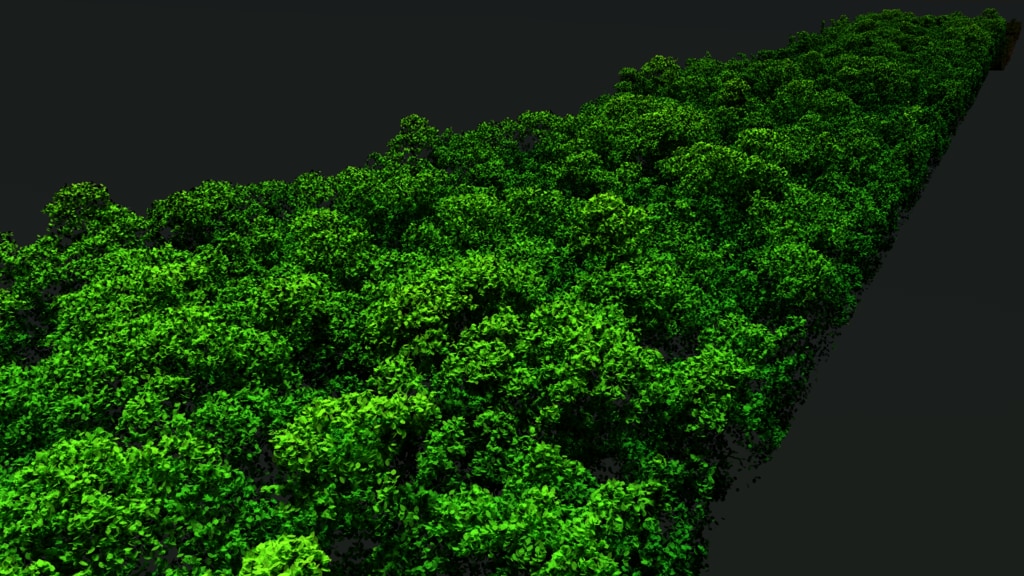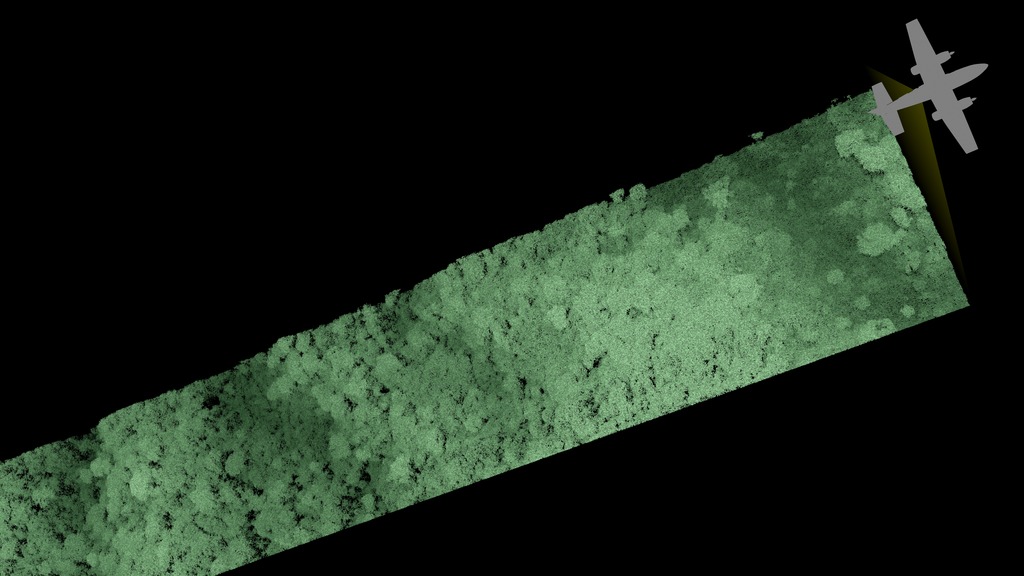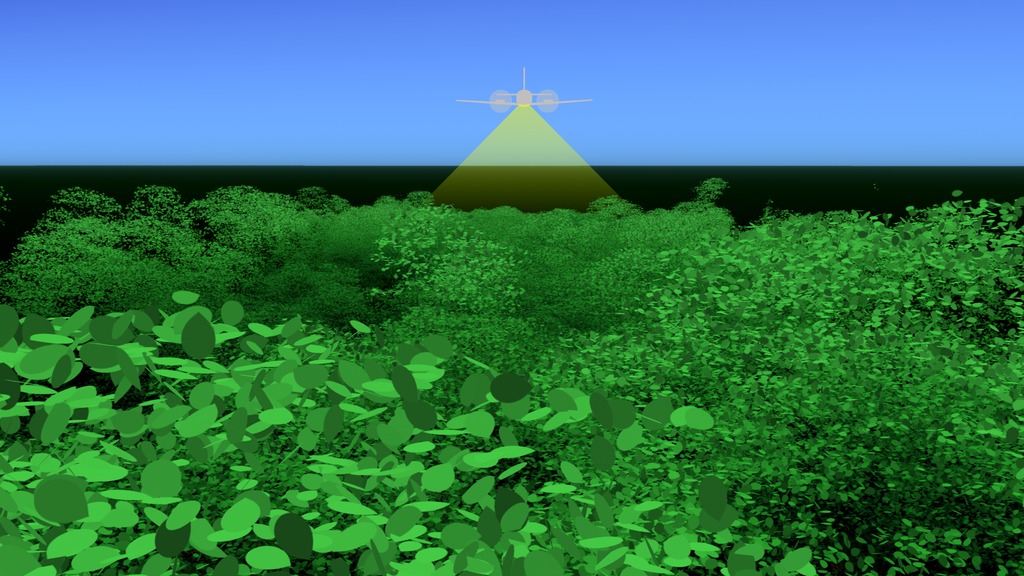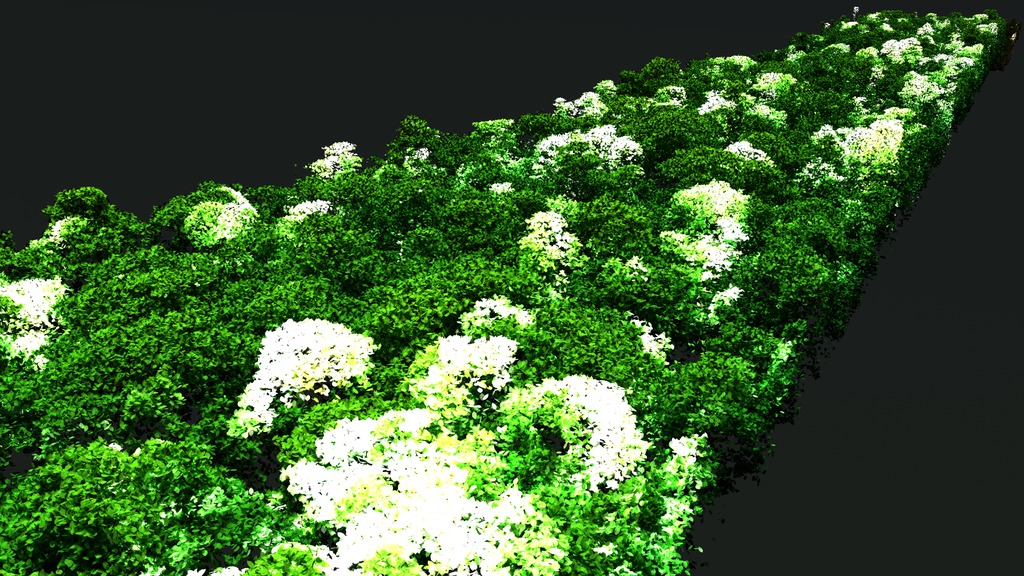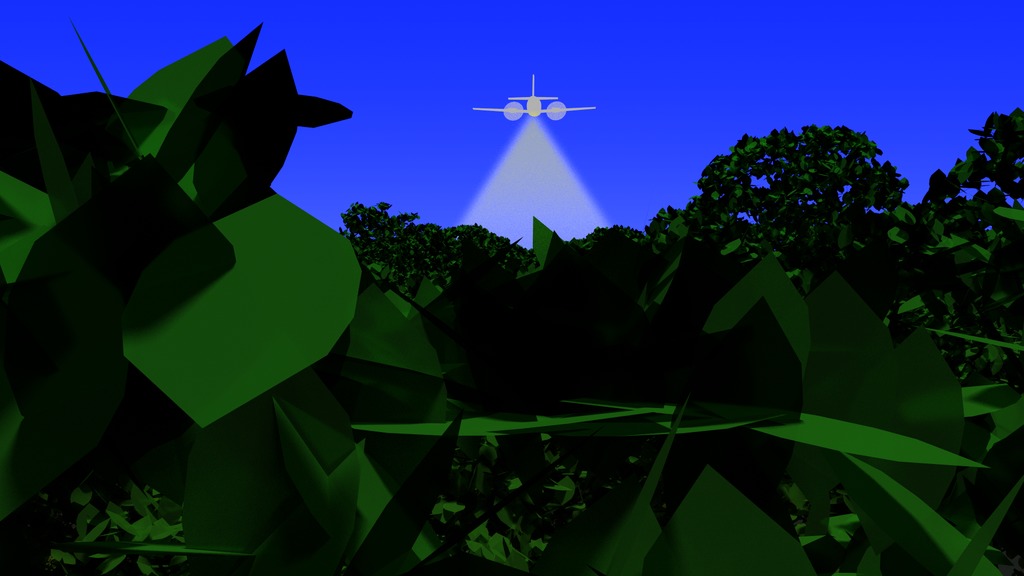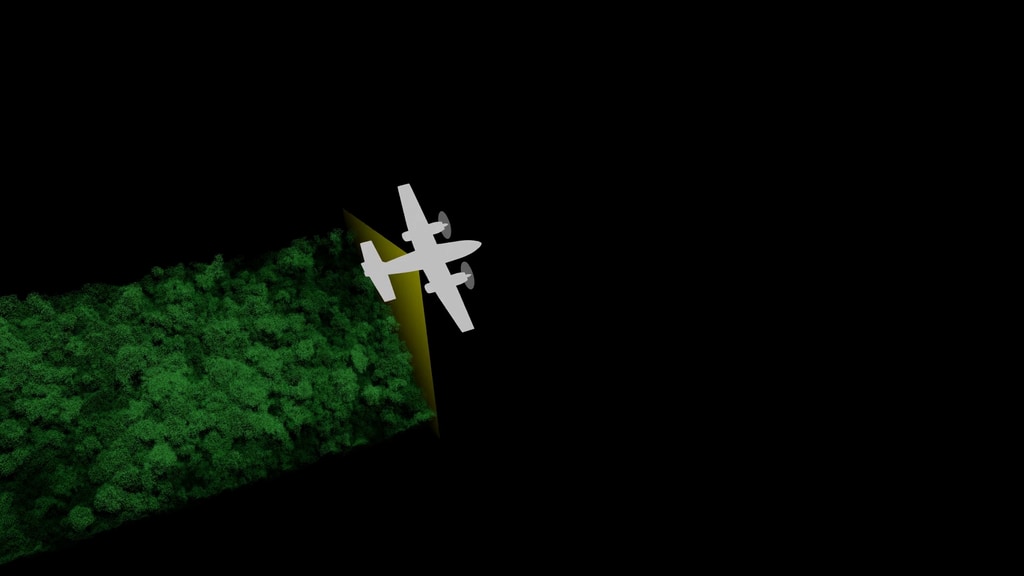Brazilian Rainforest Canopy Change at Mission Start 2013-2014-2016
This data visualization starts in 2013 with an airplane collecting lidar data. As the plane flies overhead, the stationary viewer finds themselves amongst the recently collected treetop canopy. The viewer then drifts upward getting a better view of the beginning of the data swath. Areas that change between 2013 and 2014 are then highlighted and the data transitions fully to what the canopy looked like in 2014. Next, areas of change between 2014 to 2016 are highlighted and then fully transition to the canopy in 2016. Being able to see this level of change allows scientists to carefully monitor the foliage turnover rate in this remote part of the world.
This visualization shows the resolution of LIDAR (LIght Detection And Ranging) canopy data over the Brazilian rainforest and how successive passes in 2013, 2014, and 2016 can be used to track change to the treetop canopy over time. Together these data points provide scientists with information on foliage distribution and the elements of the tree canopy. Similar LIDAR technologies are used to measure terrain topographies on the Moon and Mars.
Credits
Please give credit for this item to:
NASA's Scientific Visualization Studio
-
Data visualizers
- Alex Kekesi (Global Science and Technology, Inc.)
- Greg Shirah (NASA/GSFC)
- Horace Mitchell (NASA/GSFC)
- Cindy Starr (Global Science and Technology, Inc.)
-
Scientists
- Doug C. Morton (NASA/GSFC)
- Veronika Leitold (University of Maryland)
-
Technical support
- Laurence Schuler (ADNET Systems, Inc.)
- Ian Jones (ADNET Systems, Inc.)
-
Data provider
- Hyeungu Choi (Global Science and Technology, Inc.)
Release date
This page was originally published on Tuesday, June 12, 2018.
This page was last updated on Monday, January 6, 2025 at 12:12 AM EST.
Series
This page can be found in the following series:Related papers
https://nph.onlinelibrary.wiley.com/doi/10.1111/nph.15110
https://nph.onlinelibrary.wiley.com/doi/10.1111/nph.15110
Datasets used
-
LiDAR (LiDAR 3D point cloud) [Airplane: G-LiHT]
ID: 965
Note: While we identify the data sets used on this page, we do not store any further details, nor the data sets themselves on our site.
